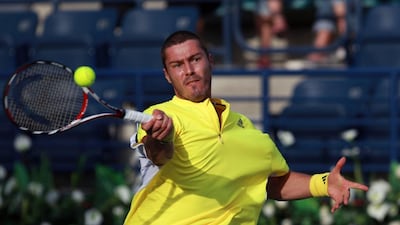It is probably not as grotesque or widespread as in cricket or football yet, but the scourge of match-fixing has been raising its ugly head in tennis a lot more regularly these days and last month’s report by ESSA, an organisation dedicated towards maintaining the integrity of sports and betting, should set the alarm bells ringing.
ESSA’s integrity report for the second quarter of 2015, released a couple of weeks before two Italian players (Daniele Bracciali and Potito Starace) were banned for life for match-fixing, found 73 events of unusual betting patterns in sports and 23 of them were deemed suspicious.
Four of those incidents were from football, while tennis accounted for the remaining 19.
The report for the first quarter had recorded 49 such notifications, 23 of which were found to be suspicious and 17 of these were from tennis.
These numbers will probably not come as a shock to those who know about tennis’ intrinsic vulnerability to manipulation.
“I can throw a match and you’d never know,” Patrick McEnroe, the then captain of the US Davis Cup team, told the New York Times in 2007.
Players, of course, have been doing that for years, and not always at the behest of evil bookmakers.
Tales abound of top players tanking their matches at smaller events after pocketing the appearances.
Some, such as Marat Safin, the tempestuous former world No 1, have tanked matches even at the grand slams.
“After a while I just got bored,” he said after his first round exit from the 2004 Wimbledon. “I lost completely motivation and I give up.”
At the 2000 Australian Open, the same Safin had entered the record books as the first person to be fined for tanking, but his fine was a mere slap-on-the-wrist $2,000 (Dh7,300).
This reluctance to get tough on tanking might have probably played a part in encouraging some of tennis’ proletariat to accept the generous offers coming their way from unscrupulous bookmakers and punters.
If Safin and the other top stars can get away with underperforming at grand slams, why not them?
It is certainly not easy turning down offers in excess of $150,000 for losing a first-round match at a nondescript Challenger when your average prize-purse for a year might not exceed $75,000.
So it is not surprising that most of the reported suspicious matches are from the lower rungs of the ATP Tour.
Most of the players banned by the Tennis Integrity Unit, a body formed following the 2007 scandal over Nikolay Davydenko’s withdrawal from his match against Martin Vassallo Arguello in Sopot, also happen to be the strugglers from the Challenger Tour.
The TIU has banned four players and an official for life since its formation in 2008 and five others have been given shorter sentences, but the Integrity Unit has refused to make public their offences.
This reluctance to divulge details is really surprising as well. Cricket and football have conducted very public and transparent enquiries into corruption in their sports and tennis needs to do the same.
Unless they do that, the TIU itself will remain under a cloud.
FOLLOW US ON TWITTER @NatSportUAE

